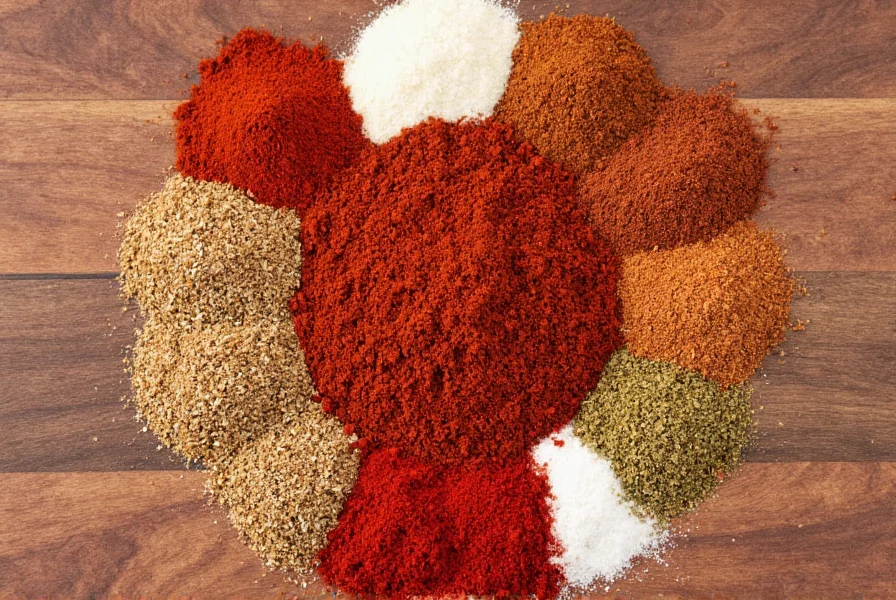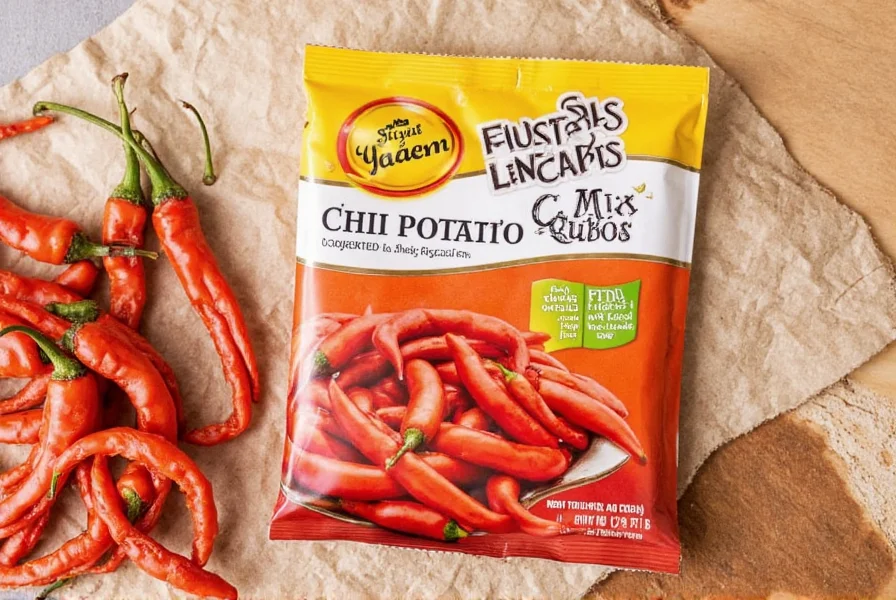Chili mix packets have become pantry staples for home cooks seeking quick, consistent results. Understanding their composition and proper usage can transform your weeknight meals from ordinary to exceptional. This guide explores everything you need to know about maximizing these convenient seasoning blends.
What's Inside a Typical Chili Mix Packet
While formulations vary by brand, most commercial chili seasoning packets share these core components:
| Primary Ingredients | Supporting Ingredients | Thickening Agents |
|---|---|---|
| Chili powder (30-40%) | Garlic powder | Cornstarch |
| Ground cumin (15-25%) | Onion powder | Wheat flour |
| Paprika | Oregano | Xanthan gum |
| Cayenne pepper (variable) | Coriander | Modified food starch |
The precise ratios determine whether a mix produces mild, medium, or hot chili. Most standard packets contain between 2-3 tablespoons of seasoning blend, sufficient for 4-6 servings when combined with appropriate liquid ingredients.
Effective Techniques for Using Chili Mix Packets
Mastering these professional techniques ensures optimal flavor development when using store-bought chili seasoning:
Bloom the Spices
For deeper flavor, combine the chili mix with 1-2 tablespoons of oil in your pot before adding liquids. Cook for 1-2 minutes over medium heat, stirring constantly. This blooming process activates the essential oils in the spices, creating a more complex flavor profile than simply dumping the mix into liquid.
Layer Your Liquids
Instead of using only water as many instructions suggest, create depth by combining:
- 1 cup beef or vegetable broth
- 1 (14.5 oz) can diced tomatoes
- 1 (8 oz) can tomato sauce
- 1/4 cup beer or coffee (for richness)
Timing Matters
Add the seasoning mix after browning your meat but before incorporating beans. This allows the spices to meld with the meat fond (those delicious browned bits) while preventing the beans from becoming mushy during extended cooking.

Creative Recipe Variations Beyond Traditional Chili
Chili mix packets offer versatility beyond standard chili recipes. Try these innovative applications:
Tex-Mex Taco Meat
Combine one packet with 1 pound ground beef, 1/2 cup water, and 1 tablespoon vinegar. Simmer 10 minutes for instantly seasoned taco filling that rivals restaurant quality.
Flavor-Boosted Soups
Add half a packet to black bean soup, lentil soup, or even vegetable soup for instant depth. The spice blend complements legumes and vegetables beautifully without overwhelming other flavors.
Meatloaf and Meatball Secret
Incorporate one packet into your favorite meatloaf or meatball recipe along with 1/4 cup tomato paste. The seasoning adds complexity while helping retain moisture during baking.
Common Mistakes to Avoid
Even experienced cooks make these errors when using chili seasoning packets:
- Overlooking sodium content - Most packets contain 400-600mg sodium. Reduce added salt elsewhere in your recipe.
- Using insufficient liquid - Thickening agents require adequate moisture to activate properly.
- Adding too early - Introducing the mix before meat is properly browned wastes flavor development opportunities.
- Ignoring acidity balance - A splash of vinegar or lime juice at the end brightens flavors that may taste flat.
Nutritional Considerations
While convenient, commercial chili mix packets vary significantly in nutritional profiles. Most contain:
- 5-15 calories per serving
- 400-600mg sodium (17-26% of daily value)
- 0-2g carbohydrates
- Typically gluten-free (check labels for wheat-based thickeners)
For lower sodium options, look for "reduced sodium" varieties or consider making your own blend using our simple substitution guide below.

Homemade Substitute When You've Run Out
Out of packets? Create your own blend with pantry staples using this ratio for equivalent flavor to one standard packet:
- 2 tablespoons chili powder
- 1 tablespoon ground cumin
- 1 teaspoon garlic powder
- 1 teaspoon onion powder
- 1/2 teaspoon paprika
- 1/4 teaspoon cayenne (adjust to taste)
- 1/4 teaspoon oregano
- 1 tablespoon cornstarch (for thickening)
Store unused portions in an airtight container for up to 6 months. This homemade chili seasoning mix substitute gives you complete control over sodium content and ingredient quality.
Frequently Asked Questions
Can I use chili mix packet for Cincinnati-style chili?
Traditional Cincinnati chili uses different spices like cinnamon and allspice. While you can use a standard chili mix packet as a base, authentic Cincinnati-style requires additional chocolate, cinnamon, and Worcestershire sauce for proper flavor profile.
How do I make chili mix packet less spicy?
To reduce heat, add 1-2 tablespoons of tomato paste or a small amount of sugar when blooming the spices. Dairy products like sour cream or shredded cheese added at serving time also counteract excessive spiciness without diluting flavor.
Are chili mix packets gluten-free?
Many contain wheat-based thickeners, but numerous brands offer certified gluten-free options. Always check the label for "gluten-free" certification if you have dietary restrictions, as manufacturing processes can cause cross-contamination even in naturally gluten-free spice blends.
What's the difference between chili powder and chili mix packet?
Chili powder is a single ingredient (ground dried chilies), while chili mix packets contain a complete seasoning blend with multiple spices plus thickening agents. Using plain chili powder requires adding additional spices and a separate thickener to achieve similar results.











 浙公网安备
33010002000092号
浙公网安备
33010002000092号 浙B2-20120091-4
浙B2-20120091-4